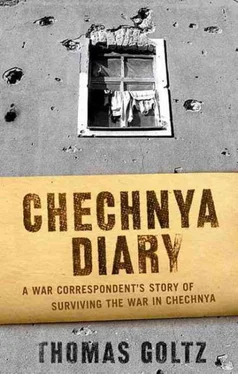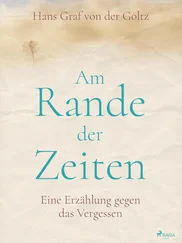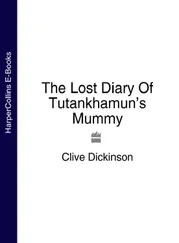The Chechens have lived on the timbered slopes of the northeastern Caucasus mountain range for at least four thousand years and have every right to claim that they are one of the original peoples of the region. Groups of invaders ranging from the Mongols to the Persians might take control of the lowlands from time to time, but the Chechens would merely melt into the mountains and conduct guerrilla wars against them until the (most recent) invader departed.
Then came the advent of Islam as a factor in Chechen communal life in the eighteenth century, and the emergence of the first identifiable leader of the territory now known as Chechnya. The agent of this change was a young theological student by the name of Ushurma, who took the name Sheikh Mansour (“victory”) when he announced a ghazavat, or holy war, to drive invading infidels from Caucasian Muslim lands. He enjoyed his greatest victory against the Russians in 1785 at the Battle of the Sunja River, when his forces destroyed an entire Russian brigade and captured heavy guns and other military supplies. Victory brought belief, and the number of his murids (“pious followers”) swelled to an army of more than twenty thousand believers in Mansour’s brand of militant Sufi Islam. Murid attacks on the so-called “Caucasus line” of cossack strongholds along the Terek River secured ever more arms and attracted even more believers across a wide spectrum of North Caucasus Muslims. Then fate entered the lists on the Russian side. While visiting an Ottoman Turkish fortress near the Black Sea, Mansour was captured when Russian forces attacked, not even knowing he was inside at the time.
Sheikh Mansour died in Russian captivity in 1794, and the Russian campaign of conquest in the Caucasus continued by fits and starts. In 1817, the Czar’s court in St. Petersburg moved the southern border of the Russian state to the Sunja River, and founded the fortress city of Grozny—a word meaning “terrible” in memory of Czar Ivan’s nickname and meant to send a message to the unruly tribes in the region of what was in store for them if they did not submit.
The first to fall were the Circassian Muslims living along the Black Sea coast. Due to a mixture of geographic vulnerability, class difference, and inability to organize joint resistance against the common Russian foe, resistance collapsed and a flood of refugees began washing up on the Ottoman Turkish Black Sea coastline. Typhoid and diphtheria claimed more victims than Russian bayonets, and to this day the Abkhaz and Adagi diaspora in Turkey say they do not eat sea fish, in memory of their ancestors whose corpses had to be thrown overboard lest their infested cadavers claim more lives on the way to Trabzon. [2] Cf. Justin McCarthy’s Death and Exile: the Ethnic Cleansing of Ottoman Muslims, 1821-1922 (Princeton: Darwin Press, 1995).
To the east, meanwhile, new resistance to the Russian imperial push into the Caucasus began to stir. It came in the form of yet another ecstatic, Sufi-inspired Muslim cleric, this time an Avar tribesman from Dagestan. His name was Imam Shamil, and his legacy is writ large across the lands of the North and South Caucasus. His twenty-six-year-long ghazavat, or holy war, ended only when the Czar’s army of forty thousand men and artillery managed to surround the mountain village of Gunib, deep in Shamil’s native Dagestan. On August 25, 1859, Russian forces stormed the town.
Remarkably, perhaps, Shamil was treated with dignity after his capture. After being paraded around St. Petersburg, he was held under house arrest in Kiev, where he was visited by friends and scholars and the assorted royal curiosity seekers. He was even a guest at the wedding of the son of the czar in 1866. Then, in 1870, his health failing, Shamil was allowed to perform pilgrimages to the holy Muslim cities of Mecca and Medina. In 1871, fulfilling the wish of all believing Muslims, Shamil was blessed by death during his hajj and buried in Medina, the city where the Prophet Muhammad breathed his last some twelve hundred years before.
Muslim resistance to Russian rule—there is little evidence to suggest that anything remotely resembling a national or ethnic consciousness existed in the North Caucasus at the time—continued in the form of localized revolts whenever Russian authority seemed to wane. The biggest and indeed permanent waning of czarist power, of course, came in the form of the Russian Revolution of 1917.
A baffling, complex picture of five-sided war and sudden, shifting alliances emerges. On one hand were “nationalist” Chechens seeking first German and Ottoman-Turkish, and then English aid against the Bolsheviks, who in turn were allied with “traditionalist” Chechens seeking to impose Shariah , or Islamic law. Half a dozen rival republics, some that included the Terek cossacks and some that excluded them, were declared in cities or towns as various as Vladikavkaz in today’s Ossetia, Temir Khan Shura in Dagestan, and even Batumi, capital of the Georgian Black Sea region now known as Adjaria.
In the main, though, it is generally accurate to say that the Chechens and other North Caucasus Muslims fought alongside Reds against Whites, thanks to Lenin’s promise of self-determination to the peoples of the East. One might argue that, in the case of the Chechens, self-determination had less to do with national aspirations than religious ones, as made manifest in the nature and name of the last, pre-Soviet “Chechen” state—the self-styled North Caucasus Emirate. Declared by the Avar Sheikh Uzun Hajji (“the tall pilgrim”) in September 1919, and anticipating the Islamic Emirate of Afghanistan set up by the Taliban almost eighty years later, it was a fundamentalist state nonpareil. The penalty for anyone caught writing left to right—in other words, in any other script than Arabic (or Ottoman Turkish and Persian, both based on Arabic)—was death. Despite obvious differences in aims, the Emirate made common cause with the Reds against the Whites, until the alliance of convenience no longer suited the Bolsheviks, who then put paid to the “tall pilgrim’s” pious pretensions. A last-blast revolt was sounded in August 1920 by one Sheikh Najmuddin (Gotsinskii) in collusion with Imam Shamil’s grandson, Said Bey under the banner “national liberation and the Shariah state.”
Then Chechnya—or, more accurately, the Chechens—disappeared into the newly created Autonomous Mountain Socialist Soviet Republic, a constituent part of the newly created Russian Soviet Federated Socialist Republic that would soon become the core of the newly created Union of Soviet Socialist Republics. The Chechen’s new national status was enhanced in 1924 by the creation of the Chechen-Ingush Autonomous Soviet Socialist Republic, that added Ingush-inhabited areas to the west of traditional Chechen lands. If not an independent entity, for the first time the concept of a specific territory was associated with a specific people called Chechens. In 1929, cossack-inhabited areas to the north, including the city of Grozny (where only a handful of Chechens dwelled) were added, thus finalizing the territorial concept of the CIAR within the RSFSR, at least in theory.
Following Hitler’s invasion of the USSR in 1941, however, continued acts of sabotage and desertions of Chechen and Ingush draftees from the Red army were declared to be of a pro-Nazi character. So long as he was on the defensive, Stalin could do nothing. But by late 1943 and early 1944, thanks in large part to a massive supply of lend-lease weapons and machinery from the United States, the tide turned. For Stalin, this meant it was time to permanently solve the problem of the Chechens and other problematic peoples in the Caucasus along lines proposed by diverse czarist generals, but never implemented: ethnic cleansing.
Читать дальше











